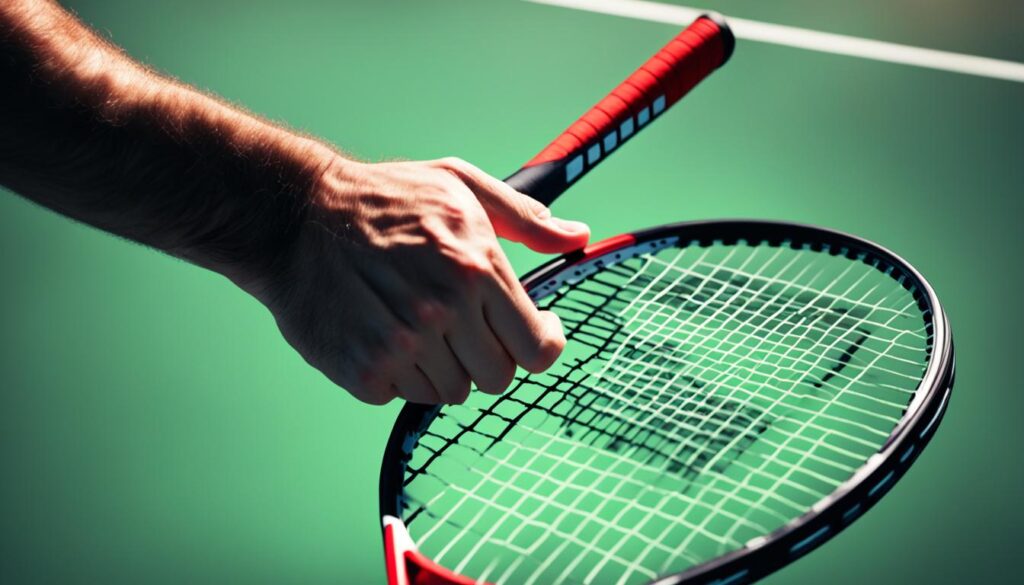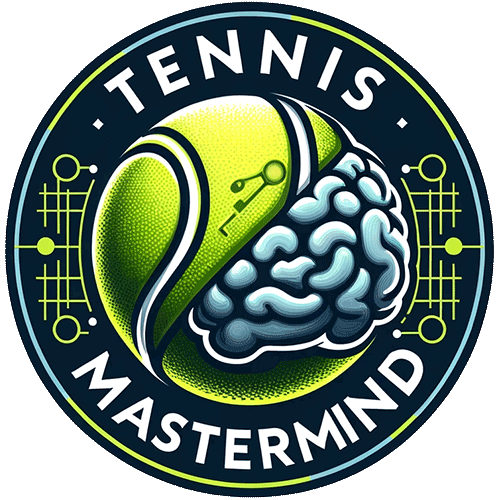In order to excel in tennis, it is crucial to master the forehand stroke, as it is the first stroke most players learn. The forehand stroke is the foundation of your game and can greatly impact your performance on the court. By understanding and implementing proper technique and fundamentals, you can improve your forehand accuracy, power, and consistency. In this article, we will explore the key elements of mastering your first forehand stroke.
Key Takeaways
- Mastering the forehand stroke is essential for success in tennis.
- The forehand stroke is the foundation of your game.
- Improving forehand accuracy, power, and consistency requires proper technique and fundamentals.
- Understanding grip variations can enhance your forehand strokes.
- Practice and attention to detail are key to becoming a forehand powerhouse.
The Importance of a Strong First Move
The first move in the forehand stroke is crucial, as it sets the tone for the entire shot. It is essential to have a proper first move technique in order to improve your forehand accuracy and generate power.
By focusing on getting your elbow away from your body during the first move, keeping your racquet strings closed, and practicing a semi-western or eastern forehand grip, you can accelerate into the ball and hit better topspin and flat tennis forehands.
Additionally, we will explore modified techniques and grip options that can enhance your forehand stroke.
Having a strong first move is crucial for improving your forehand accuracy and power. By implementing these tips and techniques, you can take your forehand stroke to the next level.
Building a Solid Foundation
To become proficient in the forehand stroke, it is crucial to build a solid foundation. This includes practicing forehand drills for beginners, focusing on hitting deep and high balls above the net consistently, and learning to move the ball around the court from left to right. Finding the ideal hitting stance and developing balance, support, and comfort in a neutral or open stance are also key aspects of building a strong foundation for your forehand stroke. By mastering these forehand fundamentals, you can lay the groundwork for a successful forehand.
One effective way to develop your forehand stroke is through targeted forehand drills for beginners. These drills are designed to improve your technique, footwork, and timing. They help you to develop muscle memory and build confidence in executing the stroke correctly.
A key focus of forehand drills for beginners is hitting deep and high balls above the net consistently. This not only helps you develop control and accuracy but also prepares you for more advanced shots and rallying with opponents. Practice hitting the balls with a smooth and fluid motion, directing them to specific spots on the court.
Another aspect of building a solid foundation is learning to move the ball around the court from left to right. This skill allows you to dictate play, control the tempo, and keep your opponents guessing. By practicing hitting cross-court forehands and down-the-line forehands, you can develop the ability to change the direction of the ball effectively.
Mastering the Ideal Hitting Stance
Finding the ideal hitting stance is crucial for a strong forehand. There are two common stances to consider: a neutral stance and an open stance. In a neutral stance, your feet are roughly shoulder-width apart, with your weight distributed evenly. This stance provides a solid base and allows you to generate power and control through a balanced position.
Alternatively, an open stance involves positioning your front foot slightly ahead of your back foot, with your hips and shoulders rotated towards the net. This stance allows for quicker lateral movement and is especially useful when hitting on the run or dealing with wide shots.
Regardless of the stance you choose, it is important to focus on developing balance, support, and comfort. These elements help ensure stability during the stroke, allowing you to transfer power effectively from your legs and core to your upper body.

Forehand Fundamentals for Success
Mastering forehand fundamentals is essential for developing a reliable and effective stroke. Pay attention to your grip, arm position, and swing path to optimize your overall technique. Consistency and accuracy can be improved by practicing proper footwork, weight transfer, and timing.
In summary, building a solid foundation for your forehand stroke involves practicing forehand drills for beginners and focusing on hitting deep, high balls above the net consistently. Additionally, finding the ideal hitting stance and mastering forehand fundamentals are key aspects of developing a strong forehand. By focusing on these fundamentals, you can lay the groundwork for a successful forehand and elevate your game.
Perfecting the Forehand Technique
When it comes to hitting a forehand like a pro, perfecting your technique is paramount. With attention to detail and consistent practice, you can develop a smooth and powerful forehand stroke that will leave your opponents in awe.
Let’s break down the key elements to focus on for a flawless forehand:
- Grip: Start by ensuring you have the proper grip. A relaxed yet firm grip allows for better control and power.
- Backswing: Pay attention to your backswing, keeping it compact and controlled. Avoid excessive movement that can hinder your shot.
- Forward Swing: Generate racquet speed during the forward swing by driving your arm and racquet through the ball with fluidity.
- Contact Point: Aim for a consistent contact point, generally in front of your body. This will provide you with better control and precision.
- Follow Through: Finish your stroke with a smooth and continuous follow through. The follow through should be a natural extension of your swing.
Now, let’s look at some forehand power tips:
- Stay Low: Bend your knees and maintain a low stance throughout the stroke. This will help generate power from your legs and provide stability.
- Keep Your Head Still: Focus on keeping your head still and eyes fixed on the ball. This will improve your timing and accuracy.
- Consistency: Avoid changing your swing during the shot. Consistency is key to developing a reliable and effective forehand stroke.
“Success is no accident. It is hard work, perseverance, learning, studying, sacrifice, and most of all, love of what you are doing.” – Pelé
By incorporating these tips into your training routine and dedicating time to practice, you’ll be well on your way to hitting a forehand like a seasoned pro. Remember, it’s all about mastering the technique and unleashing your power with precision.
Different Grips for Different Shots
The grip you use on your forehand stroke can greatly impact the outcome of your shots. It is essential to understand and master different grips in order to enhance your ability to hit a variety of shots with accuracy and spin.
The most common and versatile grip for beginners is the Eastern Forehand Grip. This grip provides solid power and control, making it ideal for players who are just starting to learn the tennis forehand technique. By mastering the Eastern Forehand Grip, you can develop a strong foundation for your forehand stroke.
However, there are other grips that can be used for specific shots like drop shots and slices. The Semi-Western Grip, for example, allows for more topspin and is effective in creating angles and controlling the ball’s trajectory. On the other hand, the Western Grip is known for its extreme topspin and is commonly used by players who prefer a more aggressive and spin-heavy style of play.
Understanding the different grips and when to use them can significantly improve your forehand accuracy and overall performance on the court. Experimenting with these grips and finding the one that suits your playing style can help you develop a diverse range of shots and strategies to outwit your opponents.

By mastering forehand grip variations, you can unlock your potential for hitting accurate and spin-filled shots.
Generating Power and Spin
Generating power and spin in your forehand stroke is essential for a successful game. To enhance your forehand strokes, we recommend utilizing the following techniques and strategies:
- Closing the racquet face for power: By closing the racquet face slightly at the point of contact, you can increase the power in your forehand shots. This technique allows you to transfer more energy from your body to the ball, resulting in greater force.
- Using the Semi-Western Grip for speed and spin: The Semi-Western Grip is known for its ability to generate both speed and spin. By positioning your hand slightly to the right of the back of the racquet, you can apply topspin to your forehand shots, causing the ball to dip and land deeper in the court.
- Employing the Western Grip for maximum spin: The Western Grip is ideal for players looking to generate maximum spin on their forehand strokes. By placing your hand even further to the right of the racquet handle, you can create extreme topspin, causing the ball to bounce high and kick off the court.
To further optimize your forehand technique for power and spin, consider the following additional tips:
- Maintain a relaxed grip: Tension in your grip can hinder the fluidity of your stroke and affect your power. Maintain a relaxed grip on the racquet to allow for smooth acceleration through the ball.
- Use your wrist flexibly: Incorporate wrist movement in your swing to add extra power and spin. Flicking your wrist at the point of contact can generate additional racquet head speed and enhance your shot execution.
- Focus on a smooth swing path from low to high: To maximize power and spin, ensure your swing path follows an upward trajectory, starting from a low position and finishing high. This motion allows you to impart topspin and lift the ball over the net effectively.
By implementing these techniques and focusing on generating power and spin, you can elevate your forehand strokes to the next level. Practice these strategies consistently to improve your forehand accuracy and dominate the game.
Conclusion
Mastering your first forehand stroke is the key to unlocking your tennis potential. By focusing on proper technique, fundamentals, and grip variations, you can improve your forehand accuracy, power, and consistency. Through dedicated practice and attention to detail, you can elevate your forehand stroke to the level of a pro.
So, get on the court, implement these tips, and start mastering your first stroke today. Remember, practice makes perfect, and with the right guidance, you can become a forehand powerhouse on the tennis court.
Now that you have a solid understanding of the tennis forehand technique, take the time to fine-tune your skills and develop your own personal style. Experiment with different grips, practice drills that focus on forehand accuracy, and continue to work on generating power and spin.
With perseverance and dedication, you will see improvements in your forehand stroke and overall game. So, go out there, keep practicing, and continue honing your tennis skills. The court is waiting for you to unleash your mastered forehand stroke and take your game to new heights. Good luck!




